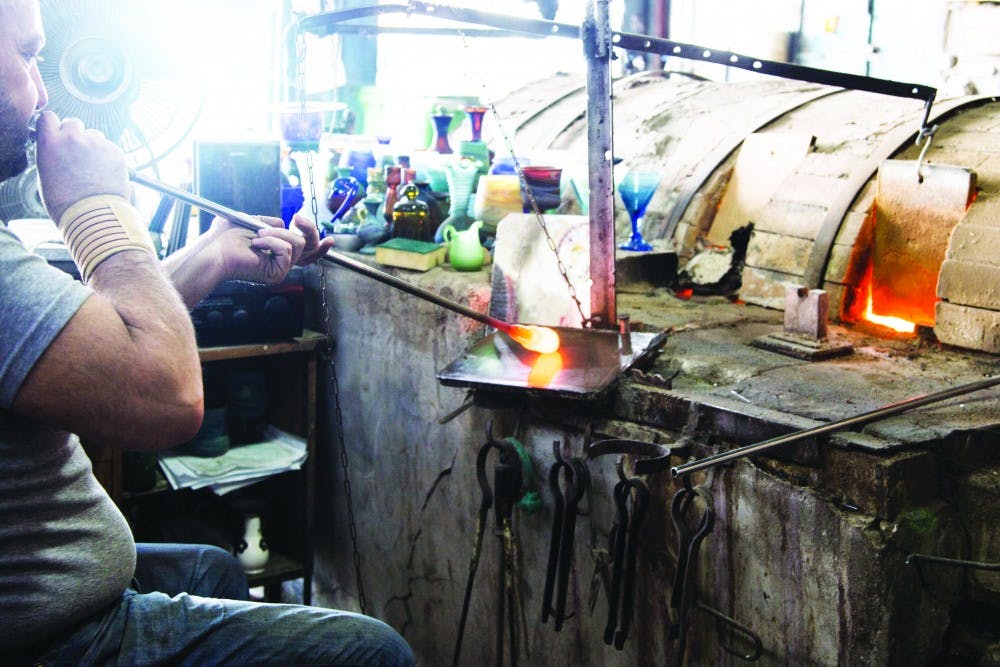By Abigail Roberts | Contributor
I was seven years old when I first visited a glassblowing workshop. Hidden away among the twisting and turning alleyways of Old Damascus, Syria, sat a centuries-old brick building.
I sat for an hour mesmerized as the artisans inside took long metal pipes to their mouths and blew out beautiful glass balls of red, blue and vibrant green. It seemed like magic.
The art of glassblowing has stretched its arm across the whole of the Middle East, however, its birthplace lies in the heart of Syria. Four thousand years ago, in the Syrian coastal city of Sidon, glassblowing was first invented and perfected.
"There is little doubt that Syria can lay claim to the discovery of glass and the art of gold-plating glassware," said Samar Hammad, the founder of Al-Hakaya Project.
Before the blowpipe was invented, glass was poured into molds and left to cool for hours. With the blowpipe, the making of objects of extreme lightness and transparency was made possible. Try to picture in your mind the concept of entire vases, cups, bowls and plates forming from molten glass at the tip of a pipe.
In a recent visit to a glassblowing workshop, I asked a local artisan, Hamza, to describe his intricate glassblowing process. Hamza has been working in this particular workshop for over a decade along with one dozen other artisans.
"I first begin by gathering a layer of melted glass at end of this pipe," Hamza said. "I then pull the pipe out of the furnace with a glowing orange ball at its tip and start to blow, swirling it to create a bubble. When it is in this state I can form it into anything I wish."
As he speaks he take his tongs in hand, and as the bubble grows, he presses down the edges, fashioning a delicate glass vase.
This whole process from molten glass to beautiful artwork seems to take only a few seconds.

"I then bake it one more time to make it solid," Hamza said, placing the tip of the vase inside the furnace. "Lastly, we put it into this cooling chamber for it to adjust to the temperature of the outside air."
This is a painstaking and delicate process requiring great skill to control the heating and cooling balance.
At the initial stage, the piece can be forged and molded because it is hot, but there is the risk that it will crystallize with imperfections. For this reason, learning to blow the glass requires constant practice.
"A normal piece only takes me about 10 minutes, but it has taken years of experience," Hamza said. "Many times, pieces come out with flaws and I have to melt the glass again." Across the Middle East, craftsmen are working to keep the tradition of glassblowing alive. From the crowded streets of Egypt, to the coastal shores of modern-day Lebanon, to the Tekiya Sulaymanieh handicraft market, near Bab Sharqi and in other parts of old Damascus, the same 2,000-year-old tradition of glassblowing continues to today.



